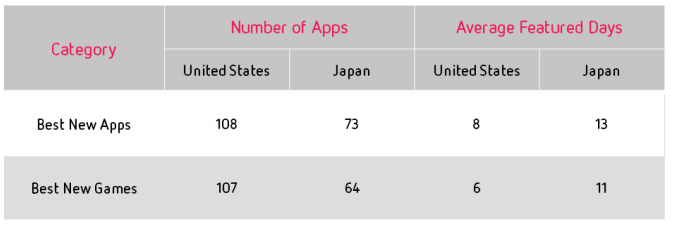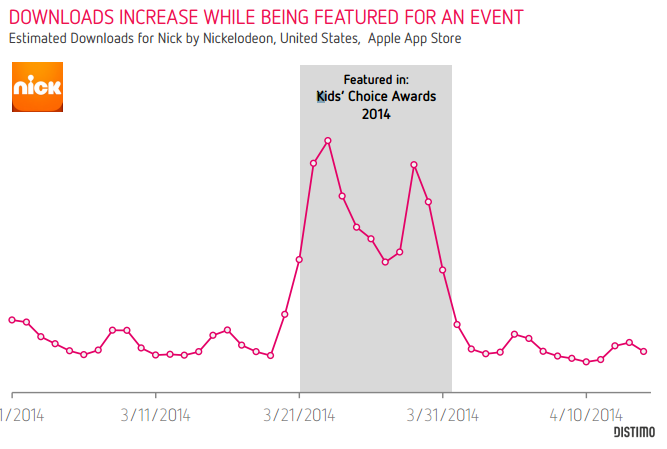What is the impact of thematic collections on app downloads in the App Store?
Thematic collections of various applications appear regularly in the Apple mobile app store. Recently, Distimo published a study on how these collections affect app downloads and revenue.
First, let's look at the terminology. We have translated Feature Categories as "collections" so that there is no confusion with application categories (for example, Games, Books, and so on) and subcategories (for example, Action, Board, and so on).
So, according to Distimo, there are two types of collections: permanent and special.
Permanent collections
Permanent collections are available almost always, or at least for a long period of time. We regularly monitor the new products in most of these collections, they are often the first thing we see when we enter the App Store. These collections include: Best New Apps, Best New Games and Editors’ Choice. Are the New to the App Store categories slightly less well-known? (appeared in January 2013) and Only on the App Store (appeared in June 2013).
The content in these collections differs from country to country. It even depends a little on which device you are watching the selection from. Curiously, the feature in the latter case is not due to the presence of an optimized version of the application for a specific device, but to whether the application is universal or not (universal applications are more often featured).
The speed at which applications change in collections, as well as the number of programs promoted, differ from category to category and from country to country.
For example, Distimo found out that in the USA, compared to Japan, there are more applications in collections and their updates occur more often.
How apps get into the Best New Apps collections is a special conversation. Someone might think that there should be only new items here. But this is not the case. Applications that performed well, released months or even years ago, are also promoted by the Apple company.
Special selections
The second group of collections are those that are either timed to an event, or include applications of a certain genre or type. Illustrative examples are the collections Back to School, Microsoft Office or If You Like... Badland (now, for example, a collection of "Card strategies" has been launched in Russia).
They can hang for a month, or they can disappear the very next day, contain a hundred or just a couple of applications.
Promoted collections on Google Play
Google Play also has collections of applications, there is its own analogue of New to the Appstore, which is called Starterkit, there is an Editor's Choice, which is very rarely updated (and which, as Distimo believes, does not particularly affect downloads). But Trending Apps receives updates daily. This collection includes those applications that have received the largest number of installations in the last 24 hours. It's funny, but usually those who want to achieve good results dream of getting a feature, but here it's the opposite. Is it a good result? Here's a feature for you!
The impact of promotion on downloads
The selections from the graph below gave the largest increase in downloads to the applications promoted in them in March of this year in the United States.
Distimo pays special attention to the Backyard Battles category. And before the promotion of the games from this collection, their downloads were relatively high, and at the time of promotion they increased by an average of 300%.
One of the apps in the collection was Backyard Monsters: Unleashed by KIXEYE. During the feature, game downloads increased by 742%.
After the end of the promotion, the average number of downloads of the game, compared to how it was downloaded before the feature, increased by 53%.
The If you like... Badland compilation is included in a series of other If you like... collections. How it gave an increase in downloads can be seen from the table below.
In all cases, the promotion significantly increased project downloads.
The impact of promotion on income
The selections from the graph below gave the largest increase in revenue to the applications promoted in them in March of this year in the United States.
On average, the revenues of the promoted applications in the Amazing Puzzlers for 99¢ collection showed the largest increase among all collections in March this year in the United States.
The revenues of one of the games in this collection — Shark Dash – increased 9 times during the promotion process compared to downloads before the start of the promotion.
However, after the promotion, most applications returned to their previous positions (it is clear that, first of all, this concerned paid applications, but this, in most cases, extended to free programs with IAP).
Smash Bandits Racing is an exception. Even after the end of the promotion in the selection of 10 Amazing Racing Games, the game continued to earn 2.5 times more than before the feature.
The other side of the coin
It is still unclear how applications become "favorites". The good news is that it doesn't cost you anything. This is a free advertisement. On the other hand, not every selection gives a positive effect, some selections may not give it at all.
For example, in March, the Apple App Store introduced two collections of independent games: Essentials: 10 Incredible Indie Games and Indie Game Showcase. The applications in both collections did not receive an increase in either downloads or revenue after the start of the promotion. Perhaps one of the reasons was that the games in these collections were paid, and the effect of promotion with paid content is usually minimal.
However, the graph below shows that sometimes it is not only the presence of a price tag that affects.
I will not joke about the topic, "if you want to make money, do not call the game indie," but it is quite possible that today, when an independent project often means something pixelated and not quite clear, this definition has begun to scare away users.
A source: http://www.distimo.com/










